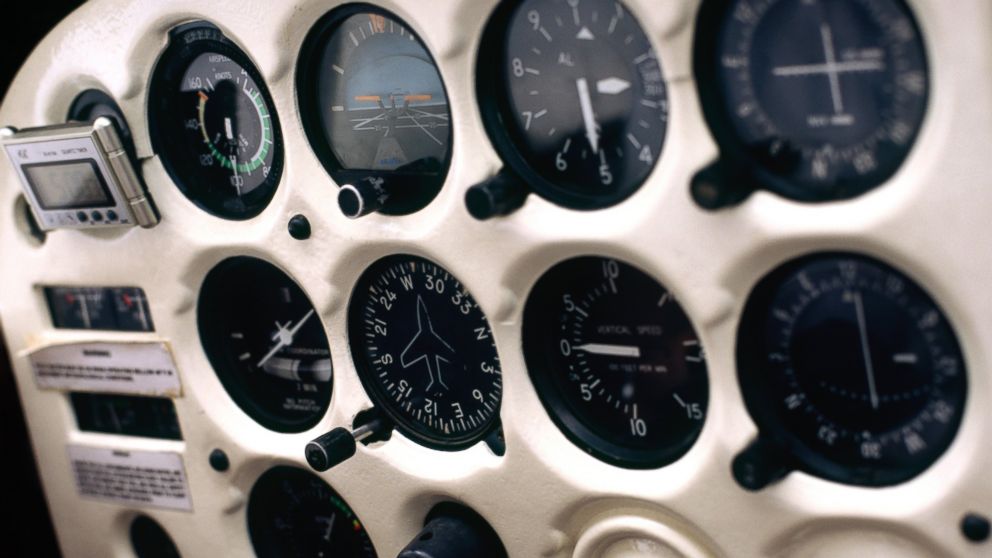What Happens When a Plane's Cabin Depressurizes
Loss of cabin pressure triggers confusion before sleepiness and even death.

— -- It is still unclear why the pilot of a turboprop plane flying from Rochester, N.Y., became unresponsive during flight, eventually crashing off the coast of Jamaica today.
But one possible scenario is that the cabin may have lost air pressure for some unknown reason, incapacitating all on board.
Aviation expert and ABC News consultant John Nance said the pilot's requests to air traffic controllers to get to a lower altitude and his subsequent debilitation "clearly shows a progressive hypoxic situation," a condition in which the body does not get an adequate supply of oxygen.
The pilot was refused permission to fly lower because of traffic below him, but when asked by air traffic controllers if he wanted to declare an emergency - which would have given his request priority - the pilot said it was not necessary. Moments later the pilot passed out.
Nance said it wasn't clear whether the pilot was incapacitated by the rapid depressurization of the cabin or fumes in the cockpit.
Passed Out Pilot Twice Asked to Descend to Lower Altitude
Victims in Plane Crash Off Jamaica Remembered as Community Pioneers
Under ordinary circumstances, most aircraft cabins, whether in a small plane or a large commercial jet, are pressurized to the equivalent of 8,000 feet above sea level or lower. At a pressure that is the equivalent of 8,000 feet, it lowers the amount of oxygen in the blood by about 4 percentage points, according to a recent New England Journal of Medicine report. This may lead to some discomfort, but no ill health effects for a person in good health.
Unresponsive Plane Crashes Off the Coast of Jamaica
According to the Federal Aviation Administration, pilots lose decision making ability fairly quickly at higher altitudes.
"The ability to take corrective and protective action is lost in 20 to 30 minutes at 18,000 feet and 5?to 12 minutes at 20,000 feet, followed soon thereafter by unconsciousness," the FAA states.
But if there was an air leak or the plane flew too high, it would have had detrimental effects, leading to an oxygen deficiency known as hypoxia, said Randy Padfield, a licensed pilot with more than 10,000 hours of flying experience and the chief operating officer of Aviation International News.
“What happens first is your brain is not as quick. You’d get very confused and stop thinking clearly,” he explained. “Then you’d fall asleep and eventually die due to lack of oxygen.”
Padfield said depressurization can happen quickly or slowly.
If it happens quickly, there is little time to react, although pilots are trained to keep an eye on cabin pressure and adjust the plane’s oxygen levels accordingly. Once pressure dips below acceptable levels, oxygen masks drop down and people put them on to breathe in pure oxygen for as long as it lasts. Protocol dictates that the pilot fly to a lower cruising altitude, usually below 10,000 feet, so that breathing would no longer be a problem for a healthy person.
If depressurization happened slowly, passengers might not notice right away, Padfield said. They might feel woozy and drift into unconsciousness. Anyone with asthma, a heart condition or who is elderly would feel the effects much sooner.
When a cabin depressurizes, the percentage of oxygen in the air stays about the same, but the molecules get further and further apart, Padfield explained.
“Imagine a balloon at sea level, then take it up to 10,000 feet. The balloon gets bigger because there is less pressure pushing in against it,” he said.
The aircraft’s engines pressurize the cabin with outside air, according to Air and Space magazine. Compressed air gets hotter and hotter as it runs through a series of fans and rotors. Some is diverted to de-ice the wings and the rest goes through a cooling system similar to a car radiator.
Then the air expands through an expansion turbine that cools air in the same way you can cool air by blowing it out of puckered lips. Finally, the air goes into a mixer, or manifold, and is recirculated through the cabin with a series of fans.
Padfield said that if a door or window blew out during flight, the cabin might be enveloped in a misty fog and loose articles like paper and small items might fly around the cabin. Passengers would presumably be wearing their seat belts and therefore be in little danger of being sucked into the sky.




